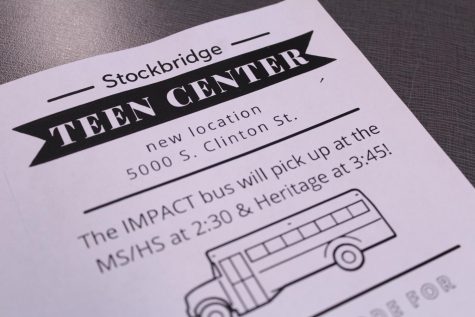5G, the new necessity connecting cities to rural wasteland
Latency. Bandwidth. Coverage. Capacity. Density. These are the promises of 5G.
While these serve as a nice commodity for many, they are crucial for rural areas. As technology has become more prominent in schools, so has the gap in accessibility.
This chasm represents why 5G is not a luxury but a necessity.
More and more learning opportunities are popping up online; however, without 5G these new opportunities can not be used to their full potential–or at all.
Latency
When a website takes a couple of seconds to load, it is more of an annoyance than an issue for most academic classes. The problem arises in those like robotics when real-time feedback is essential for those working with robots to get real-time feedback or visuals, because without them, it is impossible to operate safely.
Without 5G, real time visuals are impossible. Competing with other programs in fields like robotics or journalism in areas where schools have 5G will become unrealistic.
“People will vote with their feet and move away from places that do not provide high-speed internet access,” Jonathan Chambers, a former FCC official and partner at the Washington-based consulting firm Conexon, which works with electric co-ops looking to deliver rural broadband service told CNet. “They will leave, and that community will not survive.”
While not everyone can or will move, some are still willing to work for an internet connection.
“I would work a part time job,” to pay for access to Wi-Fi freshman Tierney Hackworth said.
Coverage
The farther the distance from highly populated areas, the farther one gets from Wi–Fi. In rural areas like Stockbridge, there are not many places to connect.
That said, not all students live in Stockbridge. Wi–Fi becomes even more and more sparse in areas like Gregory and even more sparse in Munith.
Most restaurants have free Wi–Fi, however, the Wi–Fi is for paying customers. Even with free Wi–Fi at libraries, not everyone can hang out at the library every day to do homework. This blockage has become a big issue as school has gone online. When not every home has internet, it becomes hard for teachers to assign online assignments, even though the jr./sr. high has committed to one-to-one learning with Chromebooks. With 5G there will be more places to connect without having to pay at a restaurant. These areas need the same upgrades that a small pocket of Lyndon Township is currently implementing. But, it will take time to set up.
“We live in Washtenaw County, within twenty miles of the University of Michigan, seven miles from downtown Chelsea and cannot get a high-speed internet connection,” Maribeth Hammer, a Lyndon Township resident, said during the Michigan Broadband Cooperative vote for 5G in 2017. The broadband initiative was passed by voters two to one.
Density
As technology upgrades, devices get more and more specialized and more are made for the general public, like with computers. 3D printers are the next big thing in engineering, popping up everywhere from schools to homes, making hands or parts for a robot on the spot. When all of these devices are connected to the same Wi–Fi, it slows down. 5G plans to deal with this by increasing how many devices the Wi–Fi can handle. This is going to be crucial as learning goes online, as teachers start to use more and more online applications to teach. Science teachers can show students the universe or the inside of a human body all from websites.
“It gets really annoying because when we are trying to work it will just glitch out and we will lose all of work,” Samantha Aiken, sophomore and yearbook student said.
Capacity
Students in Michigan spend an average of seven hours in high school each day, and with an average of 426 students per school according to a government survey.
Locally, when the roughly 630 jr./sr. high students are on their Chromebooks on the student private Wi–Fi, it cannot handle all of the server requests. While loading times may not be significant, they add up. This is especially true since the schools have a one to one ratio of students and devices according to Mike Lilly, the director of information technology services for the Ingham Intermediate School District.
Without 5G, rural students will not get the same quality of education as their more densely populated peers. The state of Michigan has stepped in to help, offering internet plans to those that qualify. Those who have a child in the National School Lunch Program and meet the other criteria are eligible for low cost home internet.








